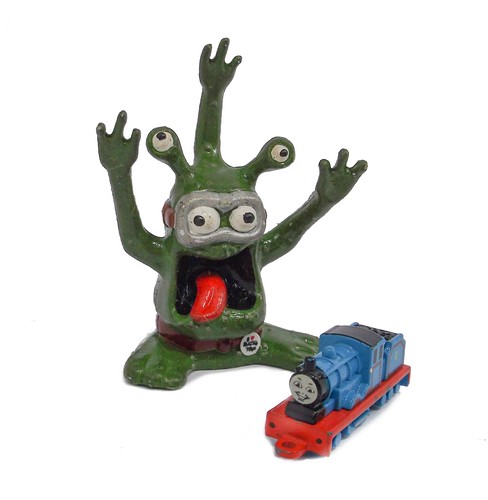As a bit of light relief from all the stuff in the world, I thought I'd take part in Inktober. The rules are that you take the title for each day, draw something based on it and then post the result online.
The idea of being able to draw has always appealed to me. I filled many sketchpads when I was young, and as you can tell from my profile picture, I fancy myself as a bit of a cartoonist.
Needless to say, the reality hit me quickly - I'm not nearly as good as I wish I was. Lack of skill, time and a couple of bad days saw me give up in under a week.
There is a good reason for this, and it's amply explained in this video by illustrator Shoo Rayner - I don't practise enough. If you want to become good at anything, you can't skip the dull practise, trial and error.
"What has this to do with modelmaking?" I hear you ask.
Simple. I am not bad at making things and that's because I do a lot of it. All that practise means when I work in Plastikard, I know how the material will behave. Using solvent allows me to joins parts by shoving them together with just enough force. When things go wrong, I have the experience (sometimes) to bodge my way out.
Those skills took time to develop.
I often read, especially in the finescale model railway world, of people who assemble and read all the correct books. Who buy the right tools. And when they finally decide to build a model, they are convinced it will be as great as any of those they have read about in magazines. How can it fail, after all, they have accumulated the knowledge.
It won't work like that as knowing what to do is one thing, actually putting that knowledge into practise is completely different. Glue won't set. Solder won't flow. Paint will flow too well. You'll file too much off something, or bend it wrong. That a chassis jig will help, but it won't build the thing for you.
That's why, like Shoo, I encourage people to get their hands dirty and do some modelling. The quicker you start, the quicker you'll find out what you are good at, and where you need extra practise. Start small and work up to the dream project or end up disheartened and abandoning the whole thing.
Me - I'm going to find some old editions of Buster comic, the one I had as a child and whose cartoon style I emulated with my face picture. With more study and more practise, maybe next year I'll get all the way through Inktober.
In the meantime, if you want to see someone who can draw - follow @tabletop_mog on Instagram.






































